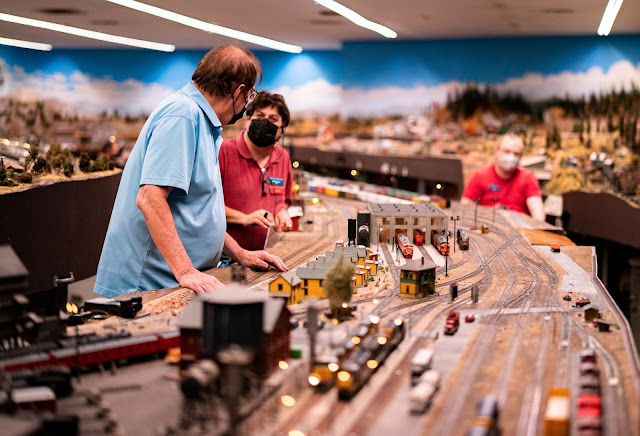5 Easy Steps to Reinvent Yourself and Downsize Today (Part 1)
Many of us live in homes that hold far too much, and we find it hard to declutter unless and until something forces us to do so. But downsizing in distress, because of illness, financial difficulty, natural disaster, or death is far more difficult.
That's why I appreciate the "gentle art" of Swedish death cleaning described by author Margareta Magnusson.* It's the process of mindfully clearing out your own possessions before others have to do it for you. It lightens and eases your own life as well as removing a burden from your loved ones.
* This blog is reader-supported. When you buy through my links, I may earn a small commission.
Look to the future.
Here's the motto for your lightened life. The quote is from Jesus (Luke chapter 12, verse 15):
Life is not measured by how much you own.
Yes, I know that's not the message we get from our culture day after day. It runs contrary to that constant push for more, newer, "better." This idea is definitely outside the norm. But what makes you happier – the dissatisfied search for more, or contentment with the good things you already have?
Whether you actually move from your current home into a smaller living space, or simply undertake a radical declutter, it's a challenge. But it's also a chance to reinvent yourself, to carry only the essentials into your new life. By divesting ourselves of decades'-worth of accumulated stuff, we emerge with more energy and more freedom. We're looking ahead, not back.
Make it easier.
Downsizing can be hard, or it can be easier. Many people begin by sorting boxes of things they have in basements and back closets. That can be very time-consuming and emotionally draining, and you're almost surely going to be side-tracked by stuff you can't even remember owning.
I recommend a different strategy: Choose what you want to keep, rather than choosing things to toss.
This isn't the "declutter one item every day for a year," on-tiptoe method of getting rid of extraneous stuff. The average American home contains 300,000 items, from tweezers to towels to toasters. Removing 365 things won't make a dent. We're going deeper than that.
The first 3 steps on a 5 step journey
1. Pack for a two-week vacation.
- Pick all of your favorite clothes and shoes – the ones that fit comfortably and look good on you.
- Include a couple of dressy outfits. Unless you regularly walk a red carpet, two is plenty.
- Plan for weather extremes. Add a few sweaters, a jacket, hat, gloves and boots. Include a few pairs of shorts and tank tops, or a couple of sun dresses and some sandals. You're building a year-round wardrobe.
- Don't forget underclothes, night clothes, and exercise clothes.
- If you're like the average American, this will amount to far less than half of what's in your closet and dresser drawers.
- Gather the grooming tools that you use every day, such as your comb, hair dryer, shaving implements, etc.
- Assemble the other things you use every day. For me that's my glasses, laptop, and phone. You might have other devices. Bring the things you would take on a trip and can't do without.
2. Assemble some housewares.
- Identify the furniture you must have in a new, smaller space. I'm talking about pieces you use every day, such as your bed, dresser, and perhaps a bedside table. You'll want the couch or your favorite easy chairs, a side table or two, some lamps. Next: the refrigerator, the dining table and chairs. Add a desk, bookshelf, TV, or other items only if you use them regularly and often.
- Open the linen closet. Quickly reach in and grab one or two sets of sheets, one or two blankets, and two pillows per bed. Make sure these are in good condition. Add two bath towels, hand towels, and wash cloths per person. Close the closet door. (Okay, grab a beach towel if you're bringing a bathing suit.)
- Gather three or four sturdy boxes (or up to six or so if your family is larger than two people) and start loading your kitchen items in order of how often you use them. Stop when the boxes are full. Seriously, two place settings of dishes and flatware per person and two or three of your most-used pots and pans, along with some other cooking basics, are sufficient. If you're protesting, "But I love to bake," see Step 3 below.
- You'll also want your vacuum cleaner, broom, dustpan, and other cleaning tools (including your washer and dryer, if your new home has a laundry room).
3. Evaluate hobbies.
- Consider only the hobbies that you currently pursue or plan to devote serious time to in your new life. Do not include hobbies that you have neglected for years unless you truly intend to resurrect them.
Related article: Declutter Your Fantasy Self
- Some tools and supplies are expensive to replace, so if you're going to use your golf clubs, telescope, stand mixer, or your two sewing machines often, keep them. But be honest with yourself.
- Plenty of hobbies require only minimal supplies, and you might decide to focus on them going forward.
Related article: 52 Minimalist Hobbies to Benefit and Enrich Your Life
Be sure to read next Monday's post – Part Two, outlining Steps 4 and 5, on the way!
Updated May 2023






This is great! Looking forward to part 2.
ReplyDeleteThanks, Linda. Hope it keeps inspiring you.
DeleteBe well,
Karen